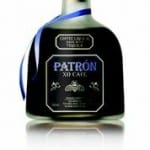Tequila
- Introduction
- History
- Production
- Types
- How to drink it
- Food Pairing
- Mezcal
- Cocktails
- GUEST COLUMN
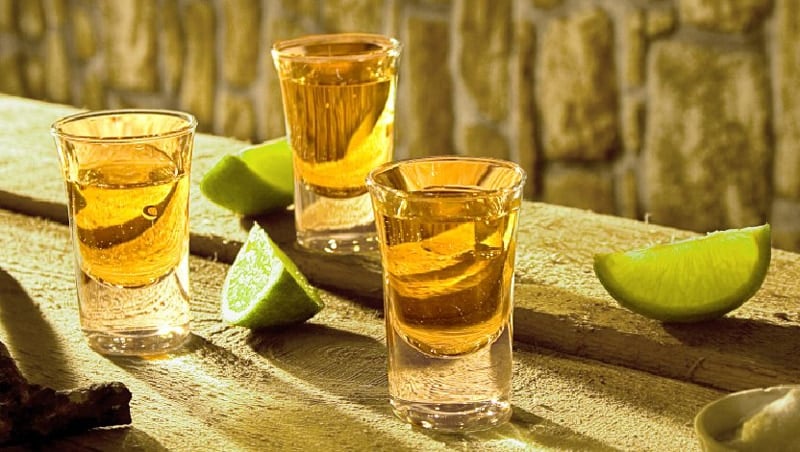
Introduction
If there ever was a spirit replete with history, mystery and intrigue, tequila is it. The key ingredient of the classic Margarita and a popular choice for a round of shots (chased by salt and lime), tequila is also often regarded as a worm-ridden, hallucinogenic Mexican potion.
Tequila is a distilled alcoholic beverage made from Blue agave plant or agave tequilana Weber. Although similar in appearance to a cactus, the Blue Agave isn’t a cactus at all, but a succulent related to the aloe and lily family.
After a maturation process of 7-10 years, the agave is harvested and its transformation into Tequila can begin
The name comes from the Tequili Indians and the volcano that towers over the acres and acres of Agave Azul in the State of Jalisco
The word Tequila means “stone that cuts”. (Obsidian, natural volcanic glass is today used in scalpel blades.)
Tequila may only be produced in:
- The entire state of Jalisco and
- Specified areas of the states of Guanajuato, Michoacan, Nayarit & Tamaulipas.
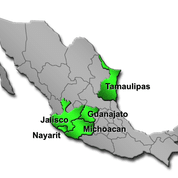
The brand “tequila” is controlled by Consejo Regulador del Tequila (CRT) for the regulation, verification, and quality certification of tequila. To ensure that tequila is genuine, it must be produced according to the strict official standard of NOM (Norma Official Mexicana) and the Council’s monogram “CRT” and “NOM” has to be displayed on the label for the bottle to be called Tequila
Tequila-like spirits have been produced in Mexico since the age of the Aztecs, long before Spanish conquerors arrived in the 16th century. In 1795, Jose Cuervo began distilling tequila in the region of Jalisco (which includes the town of Tequila), where there was an ample supply of the Weber blue agave (“ah-GAH-vey”).

And what of the worm? It’s usually found not in tequila but in mezcal, a related Mexican spirit. Mezcal is made from various types of agave plants and isn’t subject to the controls and restrictions that tequila is. The mezcal worm is harmless and, despite drunken legend, is not hallucinogenic. Initially, pickling the worm in the mezcal seemed the natural thing to do, since it spends its entire life in the agave plant; today, the worm-in-the-bottle is just another sales gimmick.
History
Tequila beginnings are shrouded in Aztec legend, where lightening is said to have stuck an agave plant and transformed its juice into an alcoholic drink with mystical powers.
In 200 A.D the Aztecs discovered that the juices of the agave plant left in the direct sunlight turns into alcohol, which they called as Pulque. Very probably there was a fermented drink that the native Indians would drink.
Pulque is an alcoholic beverage of around 4-6% alcohol. The blue agave plant contained sugars that could be fermented, and converted into alcohol.
The Spaniards arrived in Mexico in 1500 A.D. and brought the process of distillation with them to Mexico. They were used to beverages with a little more kick and began to distill the Pulque.
In the beginning this distillate was called Vino de Mezcal (or Mezcal Wine) after the plant from which it was produced, which was called either the Mezcal or the Maguey, along with Agave.
The town of Santiago Tequila was founded in 1530 and the region now referred to as the Tequila valley, became known for the quality of its Mezcal wine. The agave which grew naturally there was the Blue Agave, which because of its higher sugar content made for a better tasting Mezcal wine.

Gradually the name of the spirit changed to Vino de Mezcal de Tequila, and over time just as Tequila.
Sometime after World War II, the Margarita cocktail was created, and due to its popularity, helped change the image of tequila.

In the 1990’s then Tequila began to be refined and redefined, starting first the creation of tequilas made from 100% agave.
Tequila has become one of the top three best seller liquors in the world. Blue agave production has soared covering extensive fields where none were harvested before.
Production
Growth and Harvest
The Agave is harvested when it is 7-10 years old.
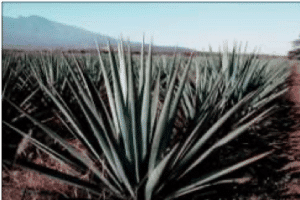
The “Pencas” (spiny leaves) are cut off, exposing the “Piña” (peen-ya), the heart of the Agave. The “pencas” are plowed into the earth as fertilizer.
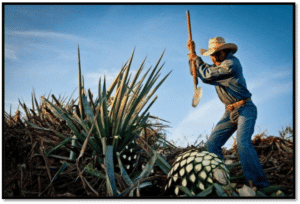
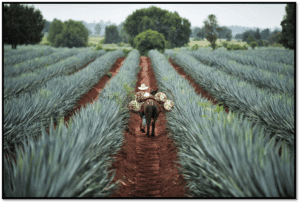
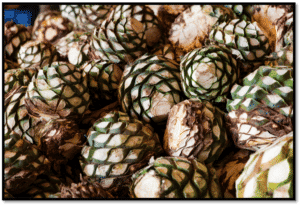
The weight of the Piña can vary between 45 and 200 lbs. Harvesting takes place all year ’round. The Piñas are then transported to the distillery.
Incoming piñas are assigned numbers and, using a spinning bicycle wheel with corresponding numbers, random samples are selected for quality control testing.
Cooking
The “Piñas” are steamed in an adobe
oven for up to 48 hours. They are
cooled for another 14 before they
are taken out of the ovens.
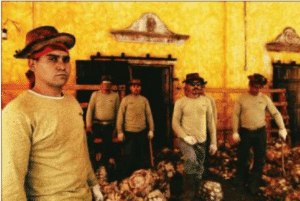
Adobe ovens impart a special flavor
to the piña and is the preferred method
for producing high-quality Tequila. Each can hold up to 1,000 Piñas.
This process converts the starches into fermentable sugars.
Fermentation
After cooking, the agave is pressed at the mill, releasing the natural juices known as aguamiel (honey water). Proprietary yeast
is added to the honey water to ferment the liquid over several days.

The yeast consumes the sugar and converts it into alcohol.
After fermentation, we have the equivalent of “Agave wine” since the liquid is about
10-12% alcohol.
Distillation
Distillation is the process by which the fermented liquid is purified and brought up to the quality required.
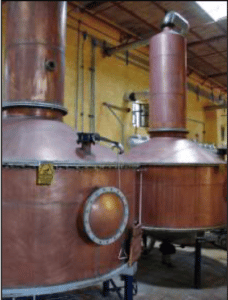
Most tequila is double distilled which
ensures the highest quality Tequila while
preserving the agave flavors.
The distillate can be divided into the
‘Head’, ‘Heart’, & ‘Tail’.
The percentage of the ‘Heart’ retained
determines the quality of the Tequila.
Maturation & Blending
With the exception of ‘Blanco’, which can be bottled immediately after distillation, the next step in the process is that of maturation.
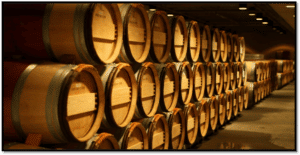
The Tequila is placed in oak barrels for what is known as ‘resting’. The length of time and the type of wood used can greatly alter the taste profiles.
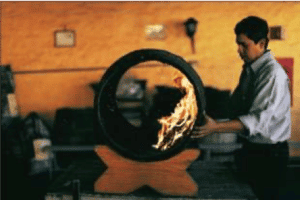
Developing the skill to sample Tequila takes time. The ‘Maestro Tequilero’ at Cuervo, Francisco Hajnal, apprenticed for 40 years before he could assume the role of ‘Master Blender’.
Types
Tequila comes in two basic types: mixto (mixed) and 100% Blue Agave. Mixto tequilas are made from a mix of blue agave and other sugars (usually molasses) whereas 100% Blue Agave tequilas are made exclusively from the blue agave only. Think of mixtos like blended scotch, and 100% Blue Agave tequilas like single malts. Only 100% Blue Agave tequilas are labelled as such; if the label doesn’t explicitly state 100% Blue Agave, it is a mixto.
Tequilas can be further classified into various types (and varying price points):
- Blanco (white) or Plata (silver). Most white and silver tequila is filtered, brought to potable strength with de-mineralised water and bottled straight from the still with little or no aging. Ultra-premium silver tequila is often left unfiltered. El Tesoro, a 100% blue agave tequila, is not diluted at all, but distilled to proof. Fine silver tequilas can be surprisingly smooth and peppery.
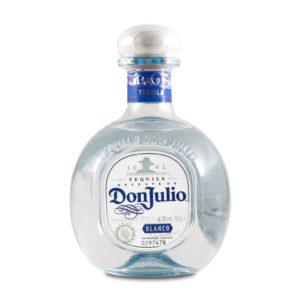
- Joven (“HO-ven”; young) or Oro (gold). Un-aged white or silver tequila blended with rested or aged tequilas, often coloured by caramel, not by age.
- Reposado (rested). Aged in wooden barrels for between two months and a year; mellow but still fresh-spirited.
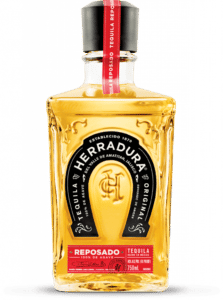
- Añejo (“a-NYE-ho”; aged). Aged in oak barrels for at least one year, but not more than three, añejo tequilas are smooth and lush with a warm amber hue. Much like whisky, añejos have characteristic tannin flavours and hints of vanilla. A deep golden colour often indicates the addition of caramel.
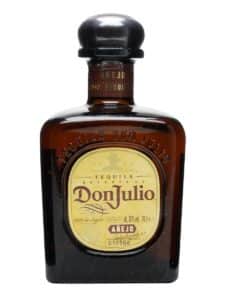
- Extra Añejo (ultra aged). This new ‘grandad’ category of tequila is aged at least three years in oak barrels, and has complex aromas and deep, smoky flavours.
Flavoured tequilas. In 2006, flavoured tequilas were allowed by the Tequila Regulatory Council; they are usually made with mixto tequilas. The brand Tuky Tequila makes a wide range of flavoured tequilas including mandarin orange, kiwi-strawberry, lime, watermelon and even vanilla-coffee. Another brand, Voodoo Tiki Tequila, makes exotic flavoured tequilas infused with lime, prickly pear and kiwi fruit. Agavero was the first-ever tequila-based sweet liqueur, made from 100% Blue Agave and Añejo tequilas blended with Damiana flower essence.
Patron XO Café – Patrón XO Cafe is a blend of Patrón Silver tequila and fine coffee.
How to drink it
- Tequila is usually sipped or had as a shot from glasses known as Caballitos (“cah-bah-YEE-tohs”).
- Stick a bottle into your freezer and drink it as an ice cold shot
- As a shot, tequila is served with salt and lime; the proper protocol is to “lick, shoot, suck”: lick the salt, shoot the tequila, suck the lime.
- Tequila can also be served on the rocks with a slice of lime.
- Sipping Tequilas
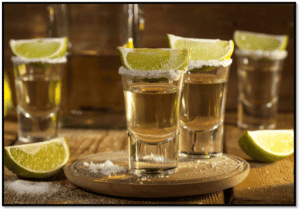
Lick, shoot, suck! In Mexico, tequila is usually drunk straight-up, with the finer, more expensive tequilas reserved for slow, appreciative sipping. Tequila shots, best done using silver (young) tequilas, are popular elsewhere in the world, served with salt and a wedge of lime. The accepted ritual for a tequila shot is to first moisten the back of your hand under the index finger with saliva and pour on the salt. Then lick the salt off your hand, shoot the tequila and finally suck on the lime wedge. It’s believed that the salt lessens the ‘burn’ of the tequila, and the lime enhances the flavour, but after several rounds of shots, it doesn’t really matter.
- Popular Tequila Cocktails include Tequila Sunrise and the Margarita. Click here for more.
The Legend of Margarita
The story tells of a nightclub in Rosarito Beach Mexico in 1938. A local showgirl, Rita de la Rosa was renowned for her vibrant and energetic displays of singing and dancing. A bartender who worked with Rita night after night grew smitten. To express his undying love for her, he decided to make her a drink. The drink, taking Rita as his inspiration, was meticulously crafted.
– A jigger of tequila, the only spirit Rita would drink
– A touch of lime juice to match her vibrant green dress
– Triple sec for the sweetness of her voice
– Shaken with ice to make it sparkle like her eyes
– A ring of salt on the rim to mimic “the halo that sits upon (his) lovely angel’s eyes”
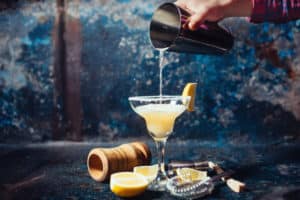
Using the full name of his love, the ‘Margarita’ was born.
Food Pairing
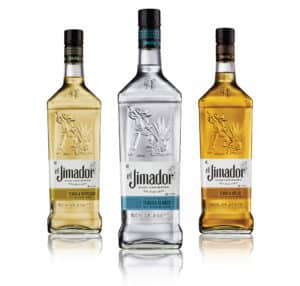
- Silver Tequilas work well with sweet citrus and spicy flavours, Eg: try a margarita with an Indian Chaat.
- The oaky flavor of reposados goes well with poultry and pork.
- The rich, intricate flavors in anejo go well with rich dishes that might include cream sauces and egg based sauces
Mezcal
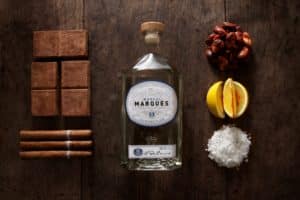
Mezcal (also spelt: Mescal) is often treated as ‘the poor cousin of tequila’. It’s an indigenous fiery spirit from Mexico, but the number of good things that one hears about tequila is probably similar to the number of slanderous rumours that float around about mezcal. It’s the perfect drink for the amigo mood (or Amiga, the she-amigo) since it’s not supposed to be very sophisticated or enjoy a very illustrious image.
The word Mezcal comes from Metl or Mexcalmetl, the pre-Hispanic Nahuatl language, meaning Agave. Mezcal is made from agave, which has more than 400 varieties. Agave, contrary to popular belief is not from the cactus family – it is actually from the Lily or Aloe family. Out of the 400 varieties, one happens to be the Weber blue agave that makes the famous tequila, the rest help in making various types of mezcal. Technically, that makes tequila one of the types of mezcal.
In all fairness it would be right to compare the ‘tequila vs. mezcal’ predicament to that of ‘cognac vs. brandy’. Tequila is distilled at least twice in a pot still and can be made only in and around the region/town of Jalisco. On the other hand mezcal is usually only distilled once (usually continuous still) and can be made in more than one region, though its production is concentrated around the valley town of Oaxaca.
